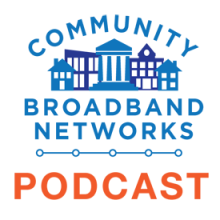ECFiber Picks Up Steam; FairPoint Deploys DSL (Not An April Fool's Joke)
We haven’t reported on East Central Fiber (ECFiber) in almost a year and, boy, are things hopping in Vermont. The community network has obtained funding to expand in east-central Vermont and have a plan to bring high-quality connectivity to more towns during the next two years. In the mean time, FairPoint Communications is using federal funding to overbuild inferior DSL in many of the areas already served by ECFiber. No, this is not an April Fool's Joke.
First, The Good News: ECFiber Is Growing
We recently touched base with Carole Monroe, Stan Williams, and Irv Thomae from ECFiber in Vermont to get caught up on what's happening with the publicly owned network comprised of 24 member towns.
The last time we shared an update, they had just announced plans to expand the Fiber-to-the-Home (FTTH) network. The organization of 24 member towns received an infusion of $9 million in revenue bonds, which allowed ECFiber to pay down existing debt and add more fiber miles to the network.
Prior to obtaining the new funding source, ECFiber had always used the crowd funding approach, which limited growth to small and steady deployments. In 2015, the state legislature enacted a state law that created “communications union districts.” A Union District can consist of municipalities that join forces to invest in Internet infrastructure; the new model made it easier for ECFiber to obtain funding for larger deployments.
This February, ECFiber announced that the network would now bring service to parts of Royalton, Strafford, Pittsfield, and Randolph, with more growth on the way:




